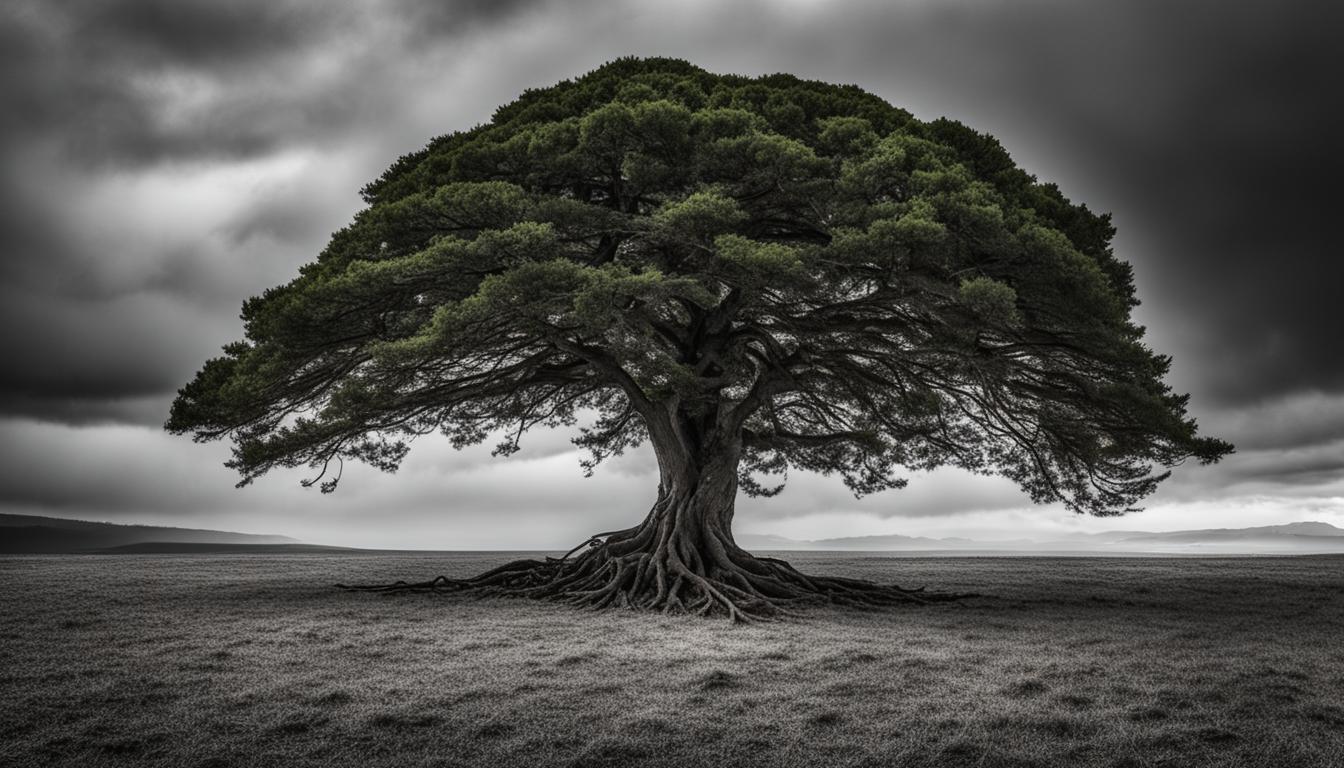Welcome to the exciting world of creative writing! If you have a passion for storytelling and a desire to explore the depths of your imagination, then you’ve come to the right place. Creative writing is a form of artistic expression that allows writers to craft compelling narratives, create memorable characters, and transport readers to different worlds.
Whether you’re new to creative writing or looking to elevate your skills, this guide will provide you with valuable insights and techniques to jumpstart your creative journey. From writing prompts and storytelling techniques to character development and plot structure, you’ll discover a wide range of tools and exercises to unleash your creativity and bring your stories to life.
So, grab your favorite pen, sit back, and let your imagination soar as we embark on this fulfilling pursuit of self-expression through words.
Key Takeaways:
- Explore various writing prompts to spark your creativity and overcome writer’s block.
- Learn storytelling techniques to captivate readers and create engaging narratives.
- Understand the importance of narrative structure and plot development in crafting compelling stories.
- Develop well-rounded characters with depth, motivations, and emotional journeys.
- Master writing techniques that evoke emotion, immerse readers, and leave a lasting impression.
Finding Creative Ideas through Problem-Solving
Ideas are the lifeline of any writer, and they often stem from creativity and problem-solving. By embracing a problem-solving mindset, you can tap into the wellspring of creative ideas and take your writing to new heights.
One effective approach to generating creative ideas is by identifying, defining, explaining, and recording problems. When you encounter a problem or challenge, take the time to analyze it and understand its nuances. This process allows you to dig deeper and explore potential solutions, which in turn can spark unique story ideas.
“The formulation of a problem is often more essential than its solution.”
– Albert Einstein
Remember that everyone has the innate ability to generate ideas, regardless of their intelligence or background. The key is to cultivate a creative mindset and embrace unorthodox approaches.
Unconventional Approaches: Fueling Creativity
To enhance your creativity and generate fresh ideas, consider exploring unconventional approaches that can push the boundaries of your imagination. Here are a few effective techniques:
- The “What If” Method: This approach involves asking yourself speculative questions that start with “What if.” By considering alternative scenarios and possibilities, you can explore uncharted territories and unearth new story concepts.
- Exaptation: Exaptation is the process of repurposing existing elements or ideas for new purposes. It involves taking inspiration from unrelated fields, genres, or concepts and applying them to your writing. Stepping outside the boundaries of traditional storytelling can lead to innovative and captivating narratives.
- Borrowing Elements: Drawing inspiration from existing works can serve as a springboard for your creativity. Consider elements such as characters, settings, or themes and reimagine them in new and unexpected ways. By borrowing and transforming familiar elements, you can create fresh and engaging story ideas.
These unconventional approaches encourage counterfactual thinking and help you cultivate a mindset that welcomes creativity and experimentation. Remember, there are no limits when it comes to generating ideas for your writing.

By embracing problem-solving as a creative tool, you can unlock a treasure trove of ideas and take your writing to exciting new places. The journey of problem-solving and creativity is an ongoing process that requires curiosity, openness, and a willingness to explore the unknown. So, embrace the power of problem-solving and let your creativity flourish!
Embracing Creativity with Writing Prompts
Writing prompts are an invaluable resource for writers, offering a creative jumpstart and a window into new ideas and perspectives. They provide a starting point, igniting imagination and allowing for the exploration of different creative directions. Through writing prompts, you can embark on a journey of self-expression, experimenting with various genres, styles, and themes.
Writing prompts inspire you to think outside the box, challenging you to push the boundaries of your storytelling abilities. With each prompt, you have the opportunity to delve into uncharted territory and discover hidden depths within your writing. By engaging with prompts, you can unlock the doors to your creativity, honing your skills and developing your unique voice as a writer.
Consider a writing prompt that invites you to envision a dystopian world where technology reigns supreme. This prompt allows you to explore societal implications, examine human behavior, and delve into ethical dilemmas. By embracing this challenge, you can spark your imagination, encouraging the birth of fascinating narratives and compelling characters.
Sparking Imagination and Exploring Different Perspectives
“Writing prompts serve as catalysts, sparking the imagination and leading writers down unexpected paths.”
– Jane Johnson, bestselling author
Writing prompts encourage you to think beyond your usual boundaries, enabling you to explore different perspectives and viewpoints. By stepping into the shoes of diverse characters and delving into their worlds, you can develop a greater understanding of the human experience. This exercise in empathy enhances your ability to create relatable characters and craft authentic narratives.
From writing about a historical event from a different perspective to depicting a story through the eyes of a child, writing prompts challenge you to see the world through different lenses. This exploration of multiple viewpoints broadens your horizons as a writer and enriches the tapestry of your storytelling.

Visual prompts, such as the image above, can also serve as powerful sparks for inspiration. As you gaze upon the image, imagine the stories it holds within its pixels. Let your mind wander and explore the details, the emotions, and the possibilities it evokes. Use this gentle nudge to embark on a creative journey, delving into uncharted territories and crafting captivating narratives.
Writing prompts are the key to unlocking your creative potential. They provide the stepping stones on which you can build imaginative worlds, captivating plots, and multi-dimensional characters. Embrace the power of writing prompts, let your creativity soar, and watch as your writing flourishes in unexpected ways.
Improving Narrative Structure and Plot Development
Narrative structure and plot development are crucial aspects of creative writing. By mastering these elements, you can create captivating and compelling stories that keep readers engaged from beginning to end. A well-crafted narrative structure ensures a smooth flow of events and character development, while plot development adds depth and intrigue to your story.
In order to improve your narrative structure, it’s important to understand the concept of a story arc. A story arc refers to the overall progression of your narrative, from the introduction of the main characters and conflict to the climax and resolution. This structure helps create a sense of tension and momentum, keeping readers invested in the story.
One essential component of a compelling narrative is conflict. Conflict brings the story to life by introducing obstacles, challenges, and dilemmas that the characters must face. It creates tension and keeps readers on their toes, wondering how the characters will overcome their struggles.
Plot development involves crafting a series of events that move the story forward and contribute to character growth and resolution. A well-developed plot includes rising action, where the conflict escalates, leading to a climactic moment, and eventual resolution. This structure helps maintain the reader’s interest and creates a satisfying conclusion.
“A good plot is like a roller coaster ride – it takes readers on a thrilling journey filled with twists, turns, and unexpected surprises.”
When improving your narrative structure and plot development, it’s essential to consider the overall goal of your story. Understanding the purpose and theme of your narrative helps ensure coherence and allows you to convey a clear message to your readers.
By honing your skills in narrative structure and plot development, you can craft immersive and impactful stories that leave a lasting impression. Whether you’re writing a short story, novel, or screenplay, mastering these elements will elevate your storytelling and captivate your audience.
Breathing Life into Characters through Character Development
Characters are the heart and soul of any story. They are the driving force that captivates readers and keeps them invested in the narrative. Effective character development is essential for bringing these individuals to life, making them relatable, memorable, and ultimately, impactful.
When crafting characters, it’s important to create individuals with depth, motivations, and flaws. By imbuing them with relatable traits and unique personalities, you give readers a chance to connect and form an emotional bond. These traits can range from simple attributes like kindness and determination to more complex aspects such as wit or vulnerability. Character traits are what make the characters feel real, allowing readers to empathize with their experiences.

“A well-rounded character is not determined by the sum of their traits but by their level of complexity and how they evolve throughout the story.” – Unknown
Understanding a character’s backstory is another crucial aspect of character development. The backstory provides valuable insights into their past experiences, shaping them into who they are in the present. By exploring a character’s upbringing, relationships, and pivotal moments, you can create a rich and compelling history that influences their actions and decisions within the story.
Moreover, characters are driven by their motivations. These are the underlying desires and goals that propel them forward in the narrative. Motivations can be as simple as finding love or as complex as seeking revenge. By establishing clear and believable motivations, you ensure that a character’s actions and decisions align with their personality and contribute to the overall story development.
Character Arcs: Growth and Transformation
One of the most captivating aspects of character development is the journey of growth and transformation that characters undergo throughout the story. This is known as the character arc. A well-crafted character arc allows readers to witness the character’s development, witnessing their evolution from a flawed and incomplete individual to someone who has learned, changed, and achieved personal growth.
Character arcs are often shaped by the challenges, conflicts, and obstacles a character faces. These experiences force characters to confront their flaws, question their beliefs, and redefine their values. As a writer, it’s important to guide characters through their arcs, ensuring that their growth is purposeful and resonates with readers.
“A character arc is a journey of transformation that reveals the true essence of a character.” – Unknown
By breathing life into your characters through effective character development, you create individuals that feel authentic and relatable to readers. Their traits, backstory, motivations, and character arcs form the foundation of their existence within your narrative, shaping their actions, decisions, and growth.
Next, we will explore how effective writing techniques can further enhance your storytelling, immersing readers in the world you create and evoking powerful emotions.
Evoking Emotion with Effective Writing Techniques
When it comes to creative writing, evoking emotion is key to capturing your readers’ hearts and minds. By employing a variety of writing techniques, you can bring your stories to life and create a deep, emotional connection with your audience.
One powerful technique is the use of sensory details. By incorporating vivid descriptions of sights, sounds, smells, tastes, and textures, you can transport your readers into the world you’ve created. For example, instead of simply stating that it was a beautiful day, you can paint a picture with words: “The sun-drenched sky was a vibrant blue, casting a warm glow on the rolling green hills.”
Metaphors and similes are another effective way to add depth and meaning to your writing. They allow you to make comparisons and draw parallels, helping readers understand complex emotions or situations. For instance, you can describe a character’s laughter as “a symphony of joy” or compare a stormy relationship to “a tempestuous sea.”
Descriptive language plays a crucial role in creating a vivid and memorable reading experience. By using precise and evocative words, you can paint a detailed picture in your readers’ minds. Instead of simply stating that the room was messy, you can describe it as “a chaotic collage of strewn clothes and scattered papers.”
One important aspect of using these techniques is to strike a balance. While sensory details, metaphors, similes, and descriptive language can enhance your writing, using them sparingly and selectively will have a greater impact. Take the time to consider the most powerful and poignant moments in your story where these techniques can truly shine.

Honing Your Craft through Writing Exercises
Writing exercises are a valuable tool for writers looking to enhance their creative writing skills and overcome writer’s block. These exercises provide focused practice in various aspects of writing, allowing you to develop your craft and discover your unique voice as a writer.
One of the benefits of writing exercises is their ability to help you explore different writing styles and genres. Whether it’s experimenting with dialogue, descriptive writing, or character development, these exercises allow you to step out of your comfort zone and expand your creative boundaries.
By engaging in regular writing exercises, you can also develop essential writing skills such as storytelling, imagery, and structure. These exercises provide an opportunity to hone your ability to create compelling narratives, evoke emotions, and build coherent storylines.
Overcoming writer’s block is a common struggle for many writers, and writing exercises can be a powerful remedy. The structured nature of these exercises gives you a starting point, eliminating the pressure of coming up with an original idea from scratch. This prompts your creativity and helps you overcome any mental blocks that may hinder your writing process.
Not only do writing exercises serve as a means of practice and inspiration, but they also foster self-discovery and personal growth. By exploring different writing exercises, you can uncover hidden talents, explore new perspectives, and gain a deeper understanding of your writing style and preferences.
Remember, consistency is key when it comes to reaping the benefits of writing exercises. Set aside dedicated time to engage in these exercises, whether it’s daily or weekly, and make it a part of your writing routine. Your skills and confidence as a writer will flourish as a result.
So, embrace the power of writing exercises as you continue on your creative writing journey. Develop your skills, overcome obstacles, and unleash your creativity. Allow yourself the opportunity to grow as a writer and enjoy the fulfillment that comes from honing your craft.

Unlocking Your Creative Potential
“Writing exercises are like warm-up stretches before a marathon—they prepare your mind and flex your creative muscles, setting the stage for a successful writing journey.”
The use of writing exercises is akin to an athlete’s warm-up routine before a race. Just as warm-up stretches prepare the body for peak performance, writing exercises prepare your mind and prime your creative muscles for a successful writing journey.
Through practice and dedication, you can gradually overcome writer’s block, sharpen your writing skills, and unlock your full creative potential. So, dive into various writing exercises and watch your writing flourish as you bring your stories to life.
Exploring the World of Fiction Writing
Fiction writing is a vast realm that offers endless possibilities for creative expression. Within the world of fiction, you can explore different genres, create captivating plots with unexpected twists, and build immersive fictional worlds. Engaging readers with compelling storytelling is a crucial aspect of fiction writing, as it allows them to escape into a different reality. With the right techniques and imagination, you can create unique and compelling works of fiction.
Diverse Story Genres
One of the fascinating aspects of fiction writing is the ability to delve into diverse story genres. From thrilling mysteries to epic fantasies, and heartwarming romances to thought-provoking science fiction, the possibilities are endless. Each genre comes with its own conventions and tropes that can be explored, subverted, or reimagined to create fresh and exciting narratives that resonate with readers.
World-Building: Breathing Life into Imaginary Realms
World-building is a fundamental element of fiction writing that involves creating detailed and believable settings for your stories. Whether you’re crafting a bustling futuristic city, an enchanted fantasy realm, or a small-town drama, world-building allows you to immerse readers in a rich and vivid environment. Consider the intricate aspects of geography, culture, history, and magic systems to construct a world that feels real and captivating.

Plot Twists: Keeping Readers Hooked
Plot twists are a powerful tool in fiction writing that can surprise and captivate readers. By introducing unexpected turns of events, you can keep your audience engaged and eager to uncover what happens next. Cleverly woven plot twists challenge readers’ expectations, create tension, and add depth to the overall narrative. Crafting well-executed plot twists requires careful planning, foreshadowing, and a touch of ingenuity.
Engaging Readers with Compelling Storytelling
Engaging readers is the ultimate goal of fiction writing. As a writer, your storytelling techniques play a crucial role in capturing and holding your readers’ attention. Use vivid descriptions, dynamic dialogue, and well-developed characters to draw readers into your world. By crafting relatable and emotionally driven narratives, you can create an immersive reading experience that leaves a lasting impact on your audience.
Delving into the Art of Poetry Writing
Poetry writing is a unique and expressive form of creative writing that allows you to distill complex thoughts and emotions into concise and evocative verses. Through the use of powerful poetic devices, such as imagery, metaphor, and rhythm, you can create captivating poems that resonate with your readers.
Imagery plays a crucial role in poetry, as it allows you to paint vivid pictures in the minds of your audience. By using descriptive language and sensory details, you can transport readers to different worlds and evoke strong emotions. For example, with carefully chosen words, you can describe the delicate petals of a flower, the salty embrace of an ocean wave, or the vibrant colors of a sunset.
“Imagery is like a painter’s brush, adding splashes of color and texture to your poetry.”
Metaphor is another powerful poetic device that adds depth and layers of meaning to your poems. By drawing comparisons between seemingly unrelated objects or ideas, you can create unique and thought-provoking associations. Metaphors allow you to convey complex emotions or concepts in a way that is both engaging and relatable for your readers.
“Metaphors are the windows through which your readers can glimpse the soul of your poetry.”
Rhythm is the heartbeat of poetry. It brings your words to life and adds musicality to your verses. By carefully structuring your lines and using techniques such as repetition or alliteration, you can create a rhythmic flow that enhances the overall impact of your poem.
“Rhythm is the melody of your poetry, guiding the reader through the symphony of your words.”
In poetry, emotional expression is paramount. It allows you to tap into your innermost thoughts and feelings, creating a profound connection with your readers. Through meaningful and authentic self-expression, you can inspire, provoke, and resonate with others on a deeply personal level.
To cultivate your poetic voice, it is essential to practice and experiment with different styles, forms, and themes. Explore a wide range of emotions, reflect on personal experiences, and use poetry as an outlet for your creativity and self-discovery.

With dedication and perseverance, you can develop your poetic craft and create beautiful works of art that leave a lasting impact. So, grab your pen, let your imagination soar, and allow the beauty of poetry to guide your creative journey.
Cultivating a Positive Mindset for Creative Writing
Cultivating a positive mindset is vital to nurturing your creative writing hobby. When you overcome self-doubt and negative thoughts, you are able to freely express yourself and explore your creativity without fearing judgment. Creating a space filled with positivity, whether through inspirational quotes, uplifting anecdotes, or visual stimuli, can greatly contribute to your motivation and provide the inspiration needed to push beyond your perceived limits. Embracing a positive mindset unlocks your creative potential and allows you to fully enjoy the journey of creative writing.
One way to foster a positive mindset is to surround yourself with words of motivation and inspiration. Fill your writing space with quotes from renowned authors or artists who have overcome obstacles and achieved greatness. These words of wisdom serve as reminders that every writer faces challenges and that self-expression is a powerful tool for personal growth.
Another effective strategy is to practice positive self-talk. Replace self-doubt and negative thoughts with affirmations and encouraging statements. Remind yourself that your ideas are valuable and that your unique perspective is worth sharing. By adopting a positive inner dialogue, you create a foundation of self-belief that strengthens your resolve to pursue your creative writing goals.
Additionally, stay connected with a supportive community of writers who share your passion. Join writing groups, workshops, or online forums where you can engage with like-minded individuals. Sharing your experiences, challenges, and triumphs with others who understand the creative process can provide invaluable support and encouragement.
Finally, remember to celebrate your achievements, no matter how small they may seem. Recognize the progress you make and the milestones you reach along your creative writing journey. Each step forward is evidence of your dedication and a testament to your growth as a writer.
As you cultivate a positive mindset, you will discover that overcoming self-doubt becomes easier, self-expression flows more freely, and a deep sense of motivation and inspiration propels you forward. Embrace this mindset, and let your creative potential soar as you fully immerse yourself in the joy of creative writing.
Overcoming Challenges and Persisting as a Writer
Every writer faces challenges along their creative journey, including writer’s block, rejection, and constructive feedback. These obstacles can be discouraging, but it’s important to remember that they are a normal part of the writing process. Rather than viewing setbacks as failures, consider them as valuable learning opportunities that can help you grow and improve as a writer.
When you encounter writer’s block, take a step back and give yourself permission to take a break. Sometimes, allowing yourself time and space away from your writing can recharge your creative energy and provide fresh perspectives. Use this time to seek inspiration from various sources, such as reading books, exploring nature, or engaging in other forms of artistic expression.
“Writer’s block is a sign that we need a change in our creative routine.”
Receiving rejection can be disheartening, but it’s crucial to remember that it’s not a reflection of your worth as a writer. Instead, use it as an opportunity to reflect on your work and consider how you can improve. Seek out constructive feedback from trusted peers, writing groups, or professional editors. Their insights and suggestions can provide valuable guidance to help you refine your writing and strengthen your skills.
The Power of Resilience and Persistence
Cultivating resilience and persistence is essential for long-term success as a writer. It’s easy to become discouraged in the face of challenges, but it’s important to maintain a positive mindset and keep pushing forward. Remember that even the most renowned authors have faced rejection and criticism at some point in their careers.
As you navigate the ups and downs of the writing process, remind yourself of your passion for writing and the fulfillment it brings you. Embrace the journey and understand that growth as a writer takes time. Celebrate small victories along the way and find joy in the process of crafting stories and expressing yourself through words.

Conclusion
Embarking on a creative writing journey is a fulfilling pursuit that allows for self-expression and personal growth. By combining various techniques such as writing prompts, storytelling techniques, narrative structure, and character development, you can ignite your passion for creative writing and unlock your creative potential.
With practice, persistence, and a positive mindset, you can develop your unique writing voice and craft compelling narratives that resonate with readers. Creative writing is not just about putting words on paper; it’s a journey of self-discovery and exploration.
So, embrace your creativity, enjoy the process, and let your words transport others to worlds of imagination. Whether you aspire to be a novelist, poet, or simply want to enhance your writing skills, creative writing offers a fulfilling and rewarding path. Start your journey today and immerse yourself in the transformative power of self-expression through the written word.
FAQ
What is creative writing?
Creative writing is a form of artistic expression that allows writers to explore their imagination and create compelling narratives.
How can I jumpstart my creative writing hobby?
You can jumpstart your creative writing hobby by using techniques like writing prompts, storytelling techniques, and exercises to develop your skills in character and plot development.
How can I generate creative ideas?
You can generate creative ideas by identifying, defining, explaining, and recording problems. Techniques like the “What If” method, exaptation, and borrowing elements from existing works can also stimulate counterfactual thinking and help you discover unique story ideas.
What are writing prompts, and how can they enhance my creativity?
Writing prompts provide a starting point for your writing, challenge you to think outside the box, and spark your imagination. They allow you to explore different perspectives, experiment with various genres and styles, and overcome writer’s block.
What is narrative structure, and how does it contribute to plot development?
Narrative structure refers to the components of a story, such as the story arc, conflict, and resolution. Understanding narrative structure helps you create compelling narratives that captivate readers. Plot development involves crafting engaging characters, creating tension and conflict, and providing satisfying resolutions.
How can I develop well-rounded and engaging characters?
Effective character development involves creating well-rounded characters with depth, motivations, and flaws. By defining their traits, exploring their backstory, and guiding them through emotional journeys, you can make your characters relatable and memorable.
What are some writing techniques that can enhance my storytelling?
Incorporating sensory details, metaphor, simile, and descriptive language can create vivid and memorable imagery, evoking emotional responses and leaving a lasting impression on your readers.
How can writing exercises improve my creative writing skills?
Writing exercises provide focused practice in various aspects of writing, such as dialogue, descriptive writing, and character development. They help you experiment with different styles and genres, expand your creativity, and develop your unique voice as a writer.
What opportunities does fiction writing offer for creative expression?
Fiction writing allows you to explore different genres, create captivating plots with unexpected twists, and build immersive fictional worlds. Engaging readers with compelling storytelling enables them to escape into a different reality.
How can I harness poetic devices to enhance my poetry writing?
By utilizing poetic devices such as imagery, metaphor, and rhythm, you can create vivid and emotionally impactful poems that reflect on personal experiences and convey profound messages in a condensed format.
How can I cultivate a positive mindset for creative writing?
Overcoming self-doubt and negative thoughts allows you to freely express yourself and explore your creativity without fear of judgment. Surrounding yourself with positivity through inspirational quotes, uplifting anecdotes, and visual stimuli can fuel motivation and inspire you to push beyond your perceived limits.
How can I overcome challenges as a writer?
By viewing setbacks as learning opportunities, being open to constructive criticism, and cultivating resilience and persistence, you can navigate obstacles such as writer’s block, rejection, and constructive feedback while continuing to grow as a writer.
What can I expect from my creative writing journey?
Embarking on a creative writing journey allows for self-expression and personal growth. By combining various techniques, honing your skills, and embracing a positive mindset, you can unlock your creative potential and craft compelling narratives that resonate with readers.


